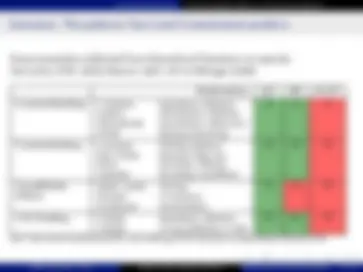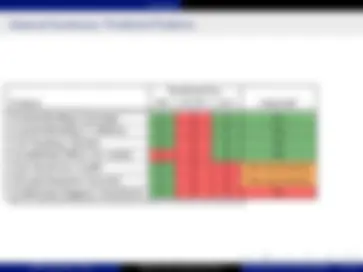











































Study with the several resources on Docsity

Earn points by helping other students or get them with a premium plan


Prepare for your exams
Study with the several resources on Docsity

Earn points to download
Earn points by helping other students or get them with a premium plan
Community
Ask the community for help and clear up your study doubts
Discover the best universities in your country according to Docsity users
Free resources
Download our free guides on studying techniques, anxiety management strategies, and thesis advice from Docsity tutors
A research paper presented at the LAGB Annual Meeting 2016 by Eva Zimmermann and Jochen Trommer from Leipzig University. The paper discusses the opacity problem in rule-based and optimality theory phonology, and introduces the concept of two-level containment as a restrictive theory to solve opacity problems. The authors compare correspondence theory and containment theory, and provide background assumptions and empirical evidence for their proposed theory.
What you will learn
Typology: Slides
1 / 49

This page cannot be seen from the preview
Don't miss anything!










































Eva Zimmermann & Jochen Trommer September 9, 2016 Leipzig University LAGB Annual Meeting 2016, York
The Opacity Problem
(1) A generalization is not surface-true Generalization G plays an active role in language L, but there are surface forms of L that violate G. Ÿ Underapplication
(2) A generalization is not surface-apparent A generalization G shapes the surface form F, but the conditions that make G applicable are not visible in F. Ÿ Overapplication
The Opacity Problem Opacity in Rule-Based Phonology
Rules are ordered: u if rule 2 would have applied earlier, it would have destroyed the context for rule 1: Counterbleeding Ÿ Overapplication
Counterbleeding /melk/ /qaraP/ /deSP/
The Opacity Problem Opacity in Optimality Theory
In contrast to a rule-based analyses, opacity is a formal problem for standard OT (McCarthy, 1999; Bakovic, 2007).
‘Unless further refinements are introduced, OT cannot contend successfully with any non-surface-apparent generalisations nor with a residue of non-surface-true generalisations.’ (McCarthy, 1999, 332)
Two-Level-Containment
Two-Level-Containment Correspondence Theory vs. Containment
Correspondence Theory (McCarthy and Prince, 1995) t 1 o 2 u 3 ↓ t 1 u 3
Deletion= an input element without an output correspon- dent
Containment Theory (Prince and Smolensky, 1993/2002) tou ↓ t o u
‘Deletion’= Non-parsing of an underlying element
Two-Level-Containment Correspondence Theory vs. Containment
A phonological node is visible to phonetics
if and only if
it is dominated by the designated root node of the structure
through an uninterrupted path of phonetic association lines
Two-Level-Containment Correspondence Theory vs. Containment
Morphological association relations Epenthetic association relations phonetically visible: phonetically invisible: phonetically visible: X
Two-Level-Containment Generalized Markedness Constraints
Every markedness constraint exists in 2 incarnations:
The general clone refers to all structure in I
The phonetic clone refers only to structure in P
(cf. Cloning in Correspondence Theory, McCarthy and Prince (1995))
Two-Level-Containment Generalized Markedness Constraints
(3) a. *VV Assign a violation mark for every pair of adjacent vowels in P.
b. *VV Assign a violation mark for every pair of adjacent vowels in I.
(4) Constraint Cloning: Illustrating example
/pa-u/ *VV *VV Dep Max a. pau *! * b. pa u *! *
Two-Level-Containment Predicting Opaque Pa erns in Two-Level-Containment
Counterbleeding /melk/ /qaraP/ /deSP/
Two-Level-Containment Predicting Opaque Pa erns in Two-Level-Containment
(5) a. *CC] Assign ∗ for every sequence of two adjacent consonants at the right word edge in I.
b. *P] Assign ∗ for every [P] at the right word edge in P.
Two-Level-Containment Predicting Opaque Pa erns in Two-Level-Containment
(8) Insertion and deletion
/deSP/ *CC] *P] Dep Max a. deSP *! *! b. deS P *! * c. deS@P *! *
Two-Level-Containment Predicting Opaque Pa erns in Two-Level-Containment
A ‘deleted’ segment remains in the structure
and can trigger a process.
(=In Tib.Hebrew: Without epenthesis, a cluster with a ‘deleted’ C results)